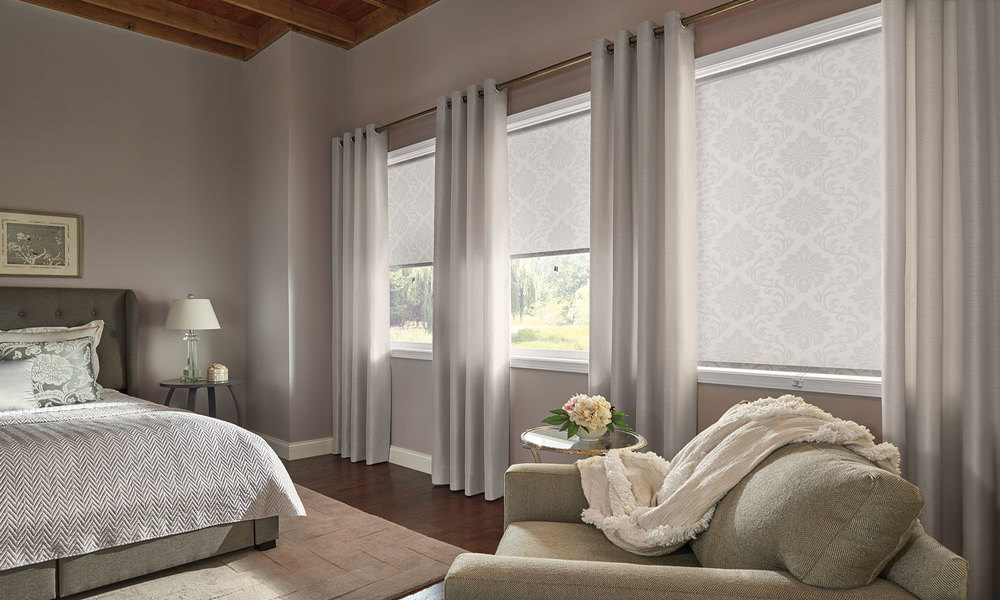
Drapery Guidelines Vancouver
Drapery instantly changes a room and causes the whole room to come alive. While many rooms don’t need drapery, many people argue that a room is not finished without drapery. Just one window treatment has the ability to add softness, warmth, and light control. There are so many details to consider when creating a space with drapery that this blog will help you out with. From rods to pleats and from tie-backs to tassels we will help you consider every detail to suit your windows and taste.
Rods
Classic Rods
Classic rods are simple, allowing bold drapery to make a statement, or decoratively contributing to the style of the room. There is also an option to add ornamental end caps to your compliment your décor.
Return Rods
Panels wrap around the curved side of return rods, which is best for blocking out light. Adjustable U-shaped rods screw directly into the wall, making this a sturdy option for heavier fabrics.
Track Rods
Drapery glides effortlessly while hanging on hooks attached to pull the inside the track. Rods can be installed into the wall or on the ceiling, completely concealing any hardware.
Drapery Headings
Defining the overall look of the drapery, the top hem is also known as the heading. Hooks, grommets, tab tops, and rod-pockets are all top borders that determine formality and play a part in functionality.
Hooks
When drawn back, the rings at the top make the fabric bend forward.
Rod-Pockets
This window treatment has a pocket stitched at the top for a rod to slide through. Ideal for a casual environment and the drape remains on the rod.
Pleats
Pleats are a style that consist of folds in fabric which are held together by stitching. Timeless and chic, pinch, pencil, box, and goblet pleats convey an ageless feeling that can be translated into many decor styles.
Pinch Pleats
Pinch pleats are a traditional drapery heading. Three folds on each pleat at the top create a delicate look.
Pencil Pleats
Comparatively softer, the pencil pleat has evenly spaced single clumps of fabric.
Box Pleats
Box pleats are good for large window openings, as they lie flat at the top allowing fullness at the bottom.
Goblet Pleats
The Goblet Pleat looks just like a goblet with fabric slightly pinched together.
Tiebacks and Tassels
Tiebacks allow you to personalize your home while also offering functionality. Holding your drapery open to let in light and creating a pretty frame around the window, tiebacks are a beautiful yet functional addition. Consisting of loosely hanging threads, cords, or other knotted material, tassels are one popular tieback option. Directly place drapery behind the hardware, or use the mounting as leverage for tiebacks. From simple fabric to ropes with tassels, this is a great place to further dress up your window.
Drapery Lengths
Traditional Lengths
A traditional approach to length is when the drapes stop just before the floor. This style won’t pick up filth on the floor or get caught on anything while being drawn back.
Puddled Bottoms
Allowing fabric to spill over onto the floor is best for formal environments that are used for decorative purposes. Constantly drawing them back and forth will pick up dirt.
For drapery enquiries to dress up your home, contact Lux blinds today!
Expert Consultations
Not sure what you need? Book a free in home consultation with our window treatment experts.